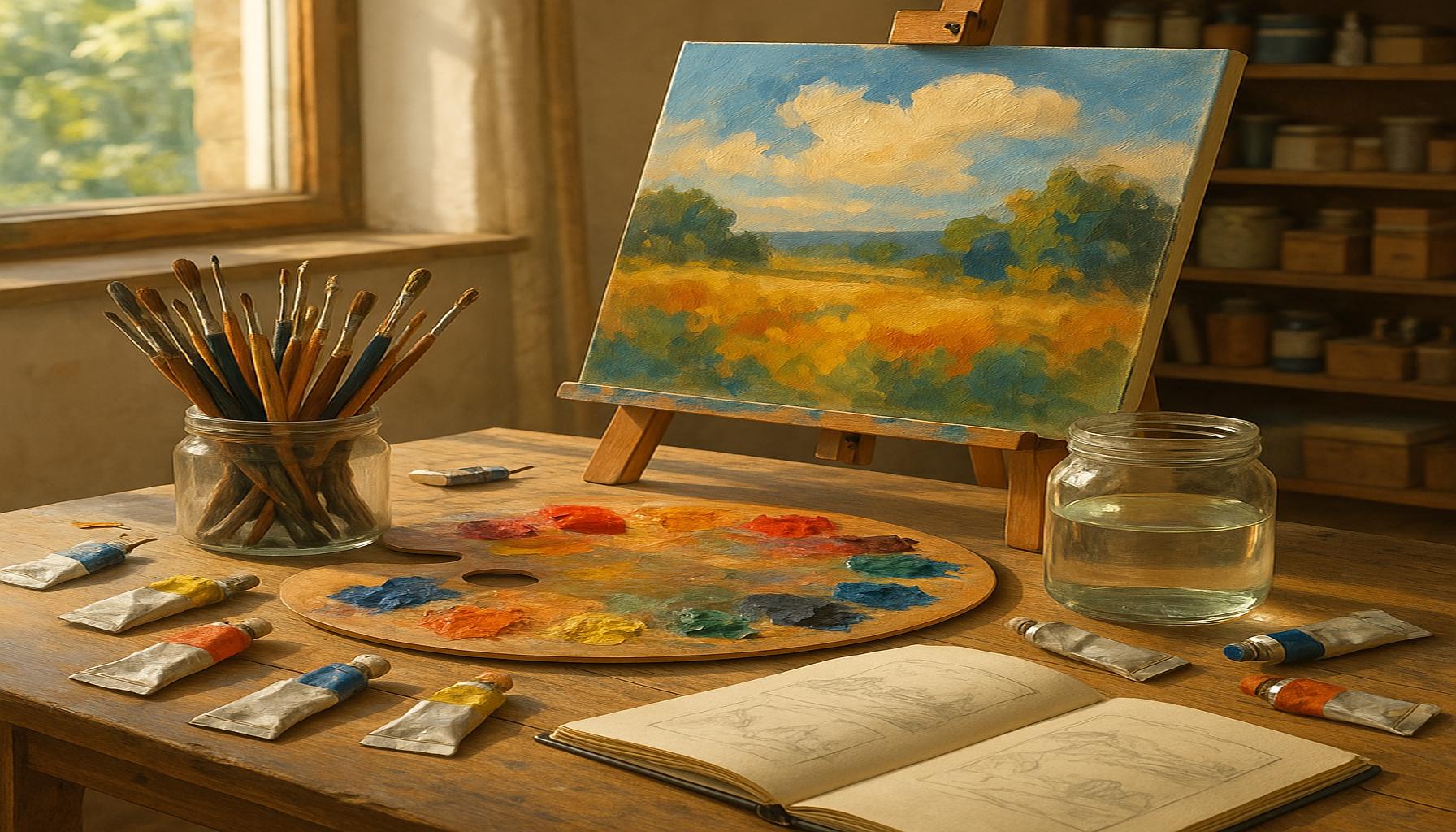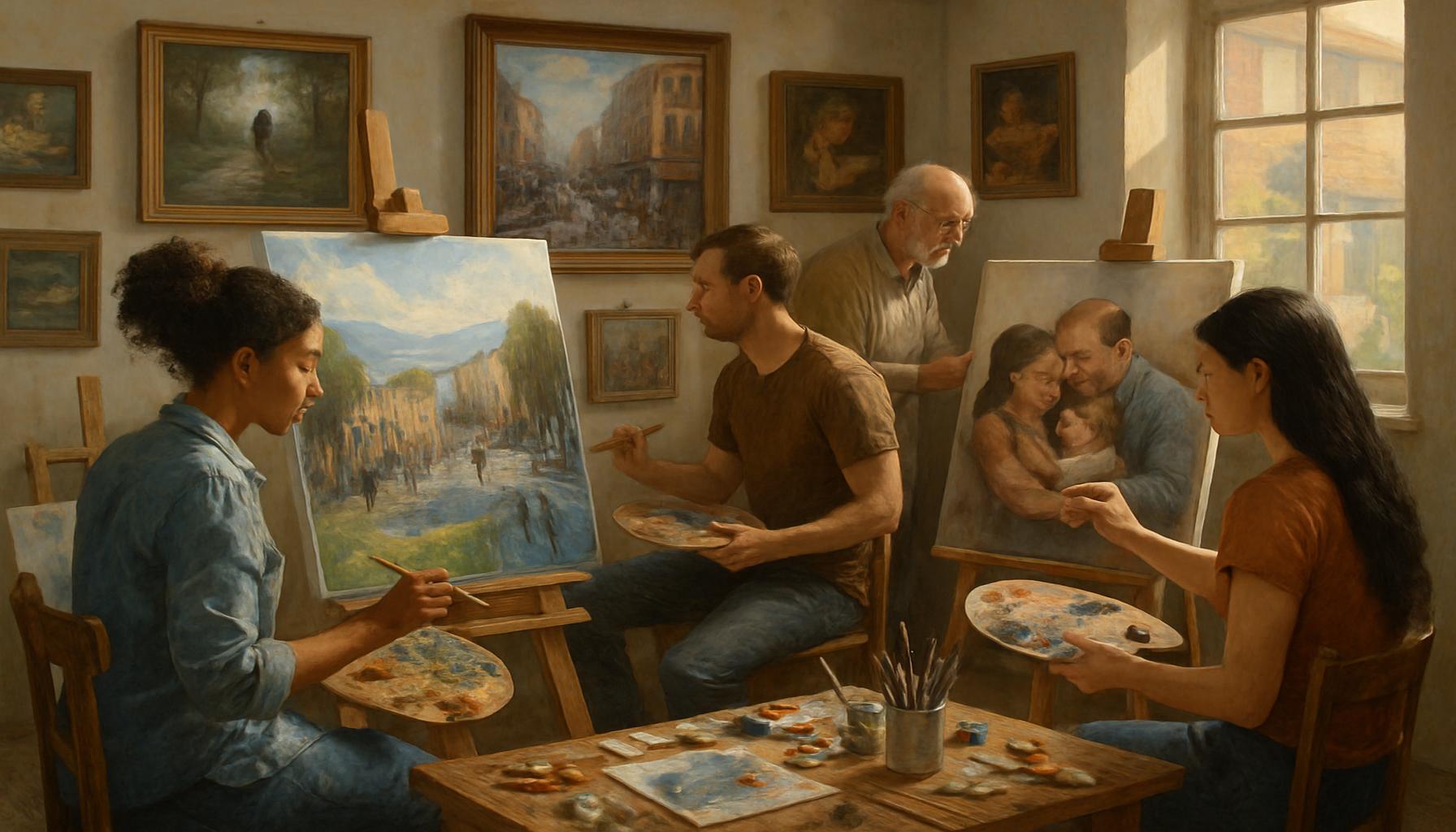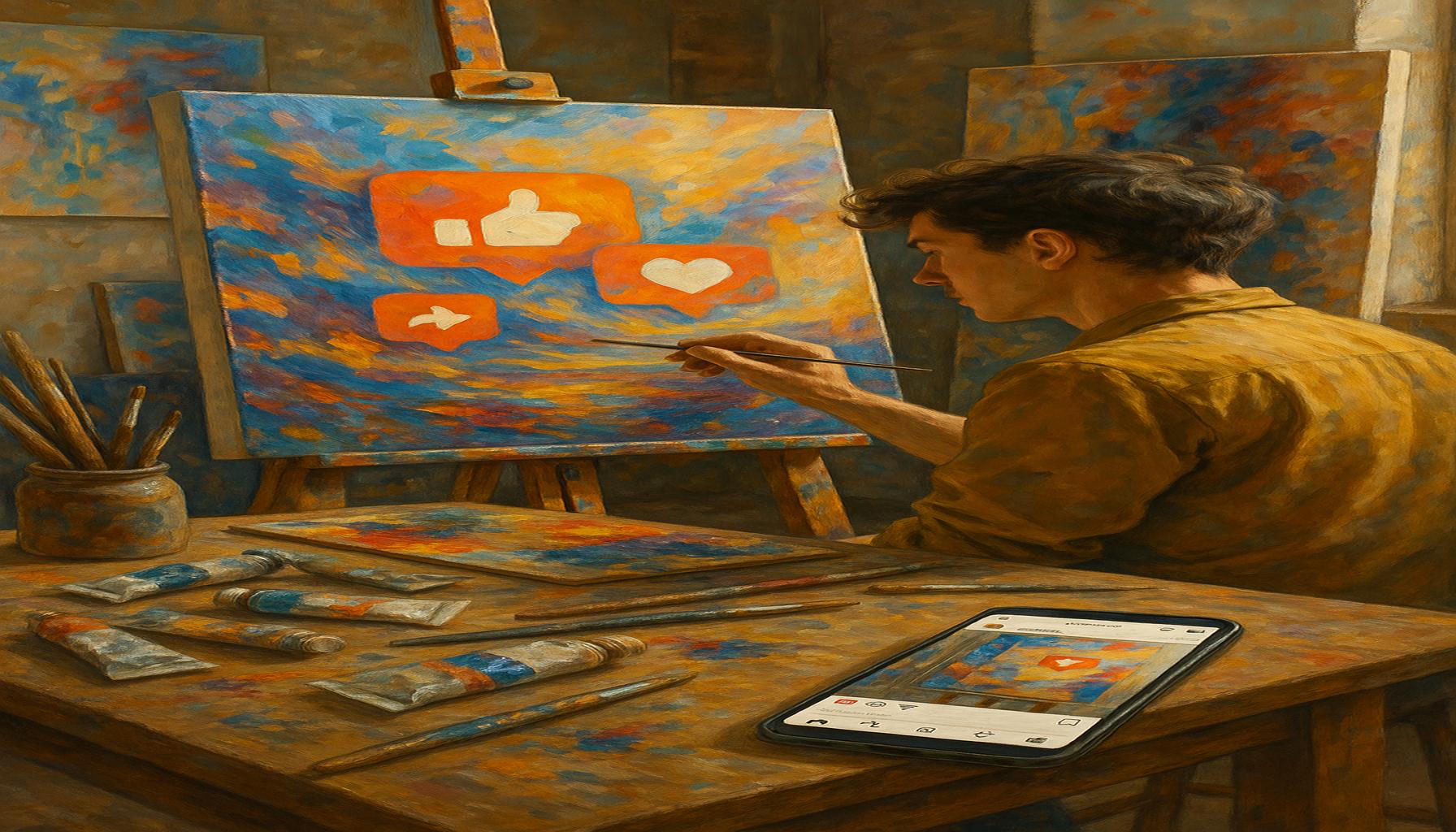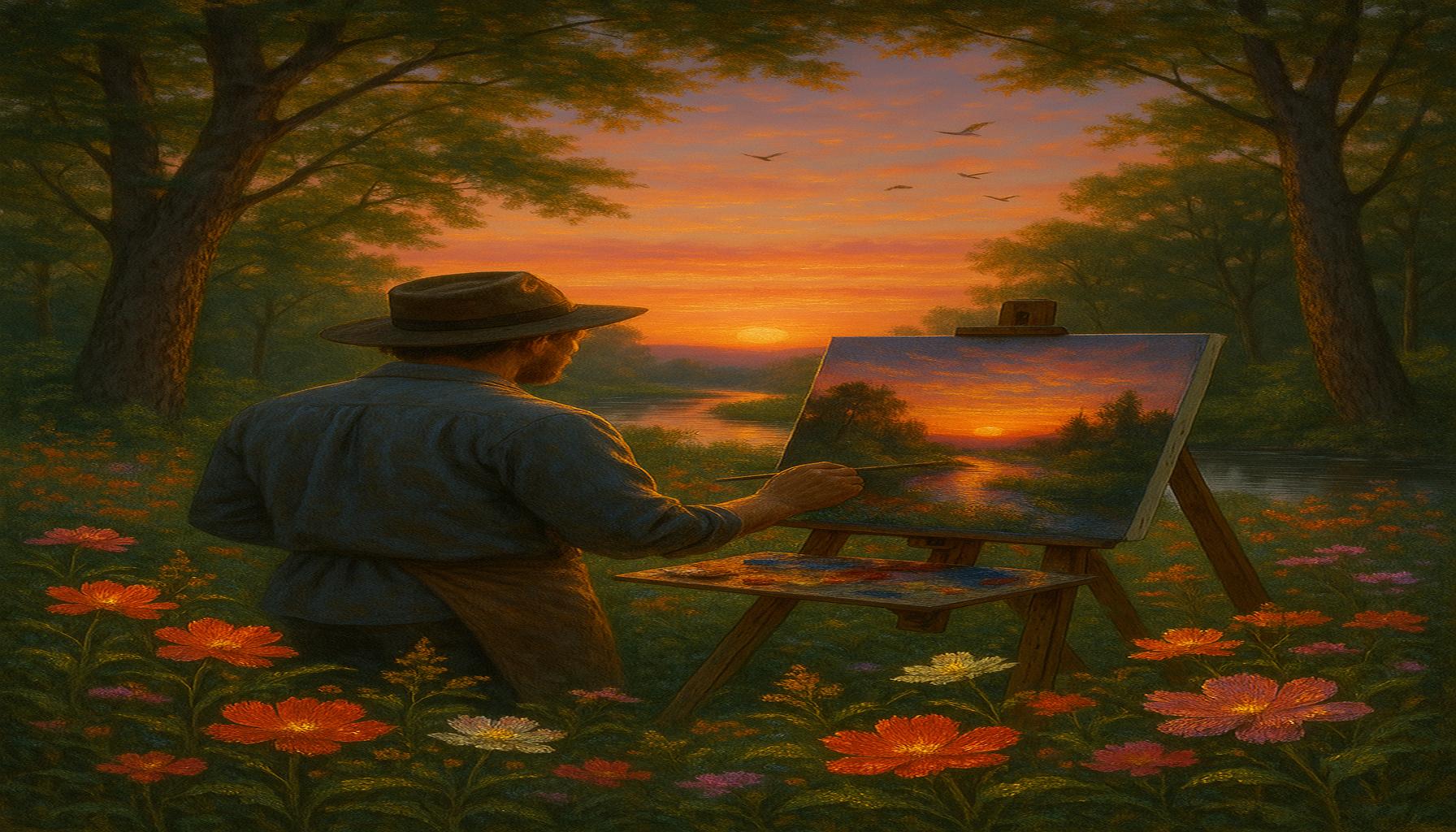How to Start a Painting Journey: Essential Tips for Beginners

The Journey into Painting: Tips for Beginners
Starting a creative endeavor like painting can trigger a mix of excitement and anxiety. For many beginners, the sheer array of choices—from vibrant colors to an assortment of brushes—can feel immensely overwhelming. The good news is that with a little bit of guidance and the right resources, anyone can unlock their artistic potential and enjoy the rewarding experience of painting.
Understand Your Medium
Understanding your medium is crucial, as different types of paint offer varied experiences and results. For instance, acrylic paint dries quickly and is water-soluble, making it versatile and easy to work with for beginners. Oil paints allow for smooth blending and longer working times, ideal for those interested in creating detailed work. On the other hand, watercolors present unique challenges due to their transparency and fluidity, often appealing to those who appreciate a more spontaneous style. Familiarizing yourself with the qualities of each medium can help you choose which one resonates with your artistic vision.
Gather Basic Supplies
Once you’ve picked a medium, it’s time to gather your basic supplies. Essential items include brushes in various shapes and sizes, a sturdy palette for mixing colors, canvas or watercolor paper, and, of course, high-quality paints. While it might be tempting to go for the cheapest option, investing in good materials can greatly enhance your painting experience. For example, a well-made brush can offer better control and allow for more nuanced strokes.
Learn Basic Techniques
Familiarizing yourself with basic painting techniques can set a solid foundation for your artistic practice. Techniques like blending help create smooth transitions between colors, whereas layering adds depth to your work. Brush strokes can convey a range of emotions—from the delicate touch of a fine-tipped brush to the bold expression of a wide flat brush. Tutorials, whether in-person or online, can provide valuable insights into mastering these essential skills.
Find Inspiration
To ignite your creativity, it’s important to find inspiration. Explore the works of renowned artists from different art movements, such as the vibrant canvases of the Impressionists or the dynamic shapes of abstract expressionism. Additionally, visiting local galleries in your community or looking through online art collections can spark new ideas and motivate you to experiment with your own style. Engaging with art is an adventure in itself, allowing you to draw from various influences as you create.
Embracing the learning curve is vital on your artistic journey. Remember, mistakes are not failures; they are opportunities for growth and creativity. Set realistic goals, such as completing a simple piece each week or trying out new techniques, and don’t be afraid to explore different subjects or styles. This exploration will not only enhance your skills but also deepen your understanding of what resonates with you as an artist.
Ultimately, every artist begins as a beginner. The path to discovering your unique voice takes time, patience, and a dash of courage. So pick up that brush and let your creativity flow—your canvas awaits a splash of color and a story to tell!
DISCOVER MORE: Click here to dive into innovative painting techniques
Choosing Your Painting Style and Techniques
As you navigate the exciting waters of your painting journey, understanding different painting styles can significantly influence your artistic expression. From realism to abstract, each style offers a distinct way to capture emotion and perspective. Begin by exploring various styles and identifying what resonates with you. Here are a few popular styles to consider:
- Impressionism: Characterized by visible brush strokes and a focus on the effects of light, this style invites spontaneity and expression.
- Abstract: Utilizing shapes, colors, and forms to convey feelings rather than realistic representations, abstract art encourages creativity without the constraints of traditional forms.
- Realism: A style that aims to depict subjects as they appear in life, realism can enhance your technical skills, critical observation, and attention to detail.
- Surrealism: This imaginative style combines dreamlike scenes with unexpected elements, sparking the mind to see beyond conventional reality.
As you explore these styles, consider experimenting with techniques specific to each one. For example, layering can enhance depth in realism, while splashing and dripping techniques often flourish in abstract expressionism. Don’t be afraid to mix styles or invent your own—art thrives on innovation!
Embrace the Learning Process
A significant part of your painting journey involves embracing the inevitable learning curve. Approach your practice with an open mind, recognizing that growth often emerges from trial and error. Here are some suggestions to cultivate your skills and foster creativity:
- Practice Regularly: Dedicate time each week to paint, even if it’s just for a short session. Consistency is key to improving your skills.
- Join a Class or Workshop: Participating in classes can offer valuable mentorship and instruction, providing you with hands-on experience and exposure to techniques you may not explore on your own.
- Create a Portfolio: Keep track of your artwork to observe your progress over time. Documenting your journey not only highlights your growth but also serves as a source of motivation.
- Engage with Fellow Artists: Joining local art groups or online communities can enable you to share experiences, collaborate, and receive constructive feedback.
Experiment with Color Theory
Color plays a crucial role in painting, invoking emotions and setting the mood of your artwork. By understanding color theory, you’ll gain insights into how colors work together and influence perception. Familiarize yourself with concepts like the color wheel, complementary colors, and color harmonies. Skillfully combining colors can enhance your artistic vision and elevate your work from ordinary to extraordinary.
As you embark on this adventure, remember that every brushstroke you make is a step towards discovering your artistic identity. Inspiration is everywhere, from the world around you to the intricate details in everyday life. So grab your paints and allow your imagination to take flight—your canvas is a window into your soul!
Essential Tools and Materials for Beginners
Embarking on a painting journey requires more than just enthusiasm and creativity; having the right tools and materials is crucial. Investing in quality supplies can significantly enhance your painting experience and results. Here are some essential items every beginner should consider:
1. Paints
The type of paint you choose plays a vital role in your artistic expression. Acrylics are popular among beginners due to their versatility, quick drying time, and easy clean-up with soap and water. Alternatively, watercolors offer a softer aesthetic, while oils provide depth and richness but require more skill and patience to work with. Experimenting with different types of paint will help you find your personal preference.
2. Brushes
Investing in a variety of brushes is essential. Each brush type serves a different purpose, affecting the texture and detail of your artwork. Flat brushes are excellent for broad strokes, while round brushes are perfect for detail work. Ensure to clean your brushes thoroughly after use to maintain their shape and longevity.
3. Canvas and Paper
Choosing the right surface to paint on is also important. Stretched canvas is the traditional choice that allows for vibrant color and texture, while watercolor paper is ideal for watercolor applications. You can also explore mixed media surfaces for more creative experimentation.
4. Easel
An easel allows you to paint comfortably at a proper angle. There are various types to choose from, including tabletop easels for smaller projects and standing easels suitable for larger canvases.
5. Palette and Mixing Tools
A palette is essential for mixing colors. Whether you opt for a traditional wooden palette or a disposable palette, ensure it provides a large enough space for your mixed hues. Additionally, invest in palette knives for mixing and scraping paint.By gathering these essential tools and materials, you’ll set a solid foundation for your painting journey. Remember, practice is key in developing your skills. Dive into the vibrant world of painting, and don’t forget to explore unique styles that resonate with you!
| Category 1 | Category 2 |
|---|---|
| Essential Tools | Key items include quality paints, brushes, and canvases. |
| Benefits of Quality Materials | Enhances creativity and ensures better results. |
DISCOVER MORE: Click here to learn how knitting can ease your stress
Setting Up Your Painting Space
Creating a dedicated painting space can significantly enhance your artistic experience and productivity. A well-organized studio or workspace allows for comfort and inspires creativity, making it essential for beginners to set up an environment conducive to painting. Consider the following elements when establishing your studio:
- Lighting: Natural light is ideal, so position your easel near a window. If that’s not possible, invest in high-quality artificial lighting that mimics daylight to avoid straining your eyes.
- Storage Solutions: Keep your supplies organized with shelves, containers, or drawers. Having quick access to your paints, brushes, and canvases will minimize distractions and keep you focused on your art.
- Comfort: Choose an ergonomic chair and a sturdy easel. Since painting can require long periods of sitting or standing, comfort is paramount to maintain your focus and enjoyment.
- Inspiration: Surround yourself with objects that inspire you—art books, favorite pieces, or even nature outside your window. Create a mood board for color schemes and themes to foster your imagination.
Investing in Quality Supplies
While it can be tempting to opt for the cheapest materials when starting your painting journey, investing in quality supplies can dramatically enhance your results. Beginners benefit from understanding that high-quality paints, brushes, and canvases lend themselves to a better painting experience. Here’s a brief overview of essential supplies to consider:
- Paints: Acrylics are recommended for beginners due to their versatility, quick drying time, and simplicity in cleanup. Watercolors and oils have their unique benefits but may demand more technique and patience.
- Brushes: A variety of brush shapes and sizes is vital for different techniques. Invest in synthetic brushes for acrylics and natural bristle brushes for oils, as each type offers distinct textures.
- Canvases: Start with pre-stretched canvases or canvas boards. The texture and tension of your surface can impact the final look of your painting.
- Miscellaneous Supplies: Don’t forget to pick up palettes for mixing colors, a palette knife for creating different textures, and easels that suit your workspace.
Finding Inspiration and Subjects
Inspiration can sometimes feel elusive, but there are myriad ways to discover subjects for your paintings. Whether it’s taking a stroll outdoors or browsing through art galleries, being observant can spark creativity. Here are several practical ways to find inspiration:
- Engagement with Nature: The beauty of landscapes, flowers, or the changing seasons provides endless material for painting. Challenge yourself to paint en plein air (in the open air) to capture the true essence of your surroundings.
- Everyday Life: Explore common objects around your home—fruit, furniture, or even pets can serve as delightful subjects. Everyday life can be a wellspring of inspiration that is often overlooked.
- Art History and Styles: Study famous artists and their works to understand what captivates you. Reinterpreting classic styles or subjects with your unique twist enables personal growth and exploration.
- Photography: Take photographs or use images as references for your paintings. This method can be especially beneficial for beginners who may find it challenging to paint live subjects.
The path to becoming a skilled painter is filled with exploration and experimentation. Embrace the vital tips outlined, and allow your creativity to flourish as you develop your own unique approach to art. Whether it’s setting up your space, investing in quality materials, or continually seeking inspiration, each step will pave the way toward artistic fulfillment.
DISCOVER MORE: Click here to delve into the art of street photography
Conclusion
Embarking on your painting journey is a thrilling endeavor filled with opportunities for self-expression and creativity. By following the essential tips laid out in this article, beginners can build a strong foundation for their artistic pursuits. Establishing a dedicated workspace not only enhances productivity but also nurtures inspiration and comfort—two critical components for any artist.
Choosing quality supplies eliminates frustration and allows you to explore techniques without the limits imposed by inferior materials. As you invest in your craft, take time to familiarize yourself with different paint types, brushes, and canvases to discover what resonates with your style. Remember, finding inspiration is paramount; whether it’s through nature, everyday subjects, or art history, always keep your eyes open to the magic around you. Your artistic vision can emerge from the simplest sources if you remain curious and observant.
As you set out on this transformative path, allow yourself the freedom to experiment and make mistakes. Each brush stroke teaches you something new, shaping your unique voice as a painter. Ultimately, the journey is more important than the destination—embrace the process, and let your creativity flourish. Delve deeper into your artistic exploration, and who knows, you may just surprise yourself with the breathtaking creations you develop along the way.



